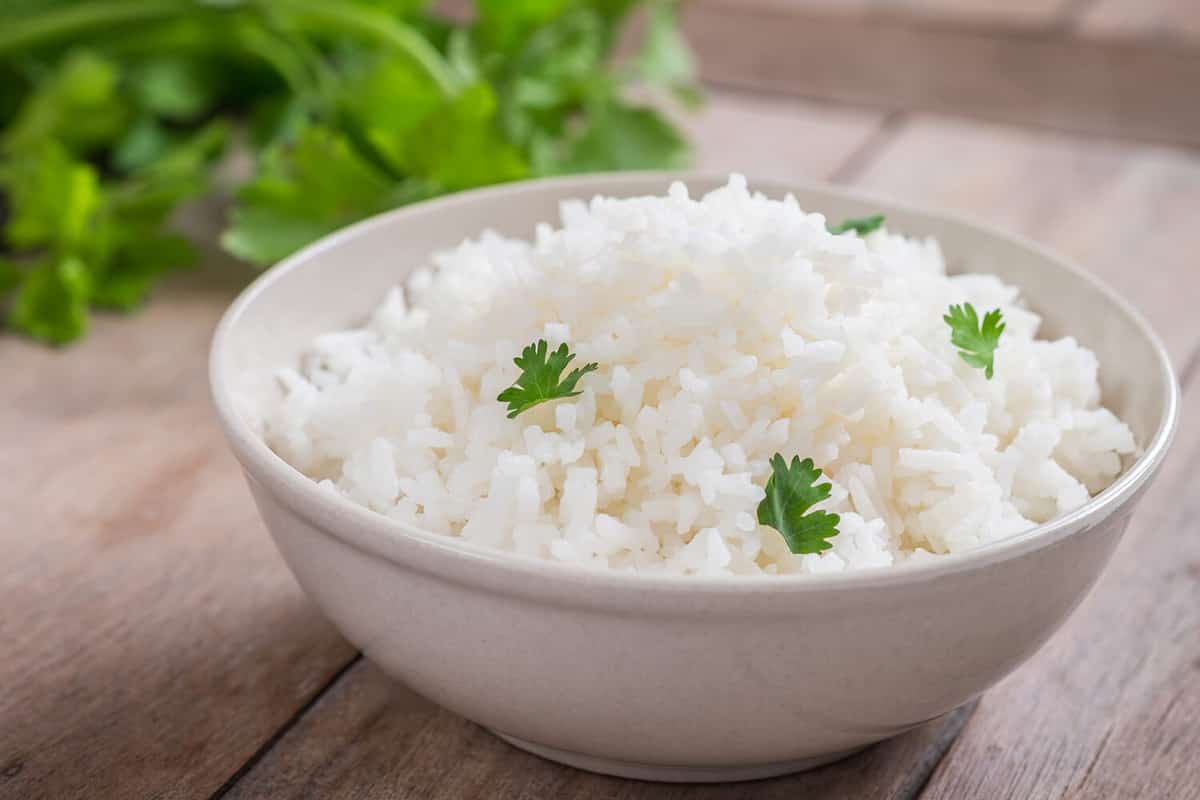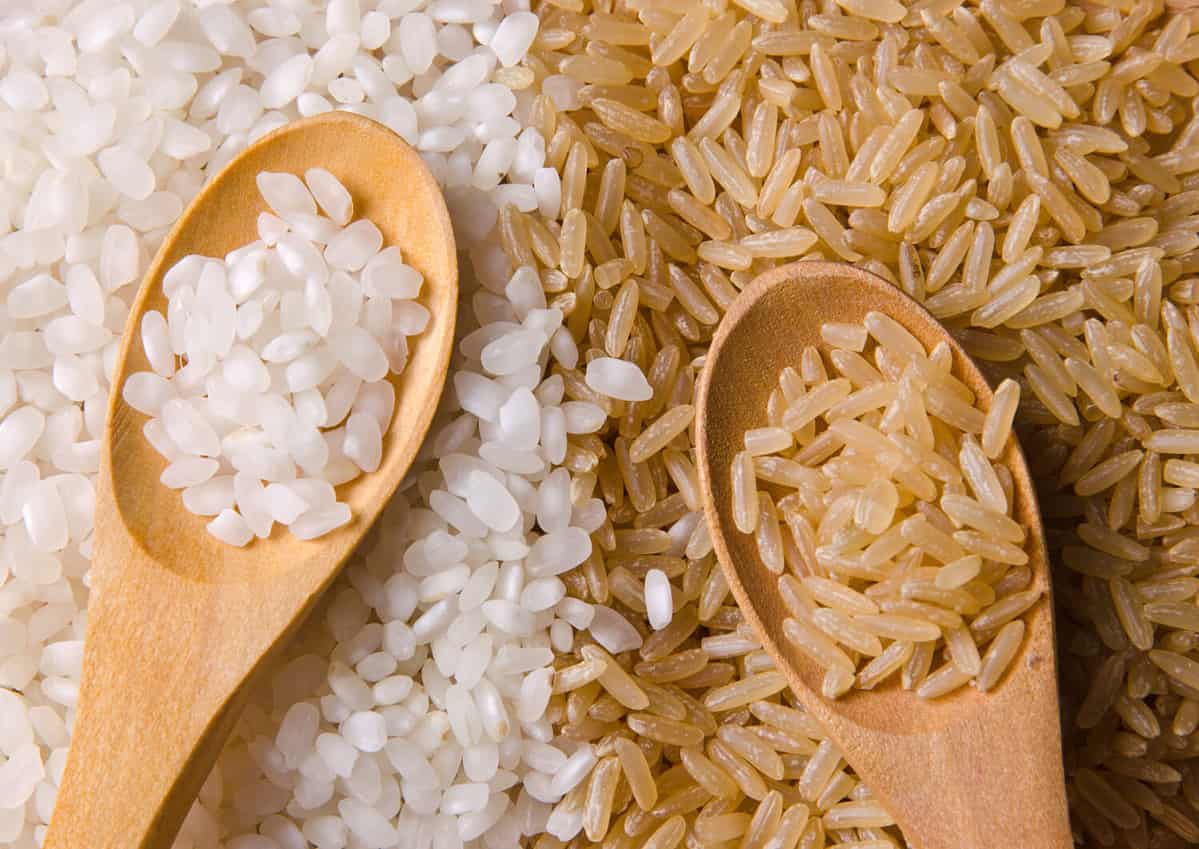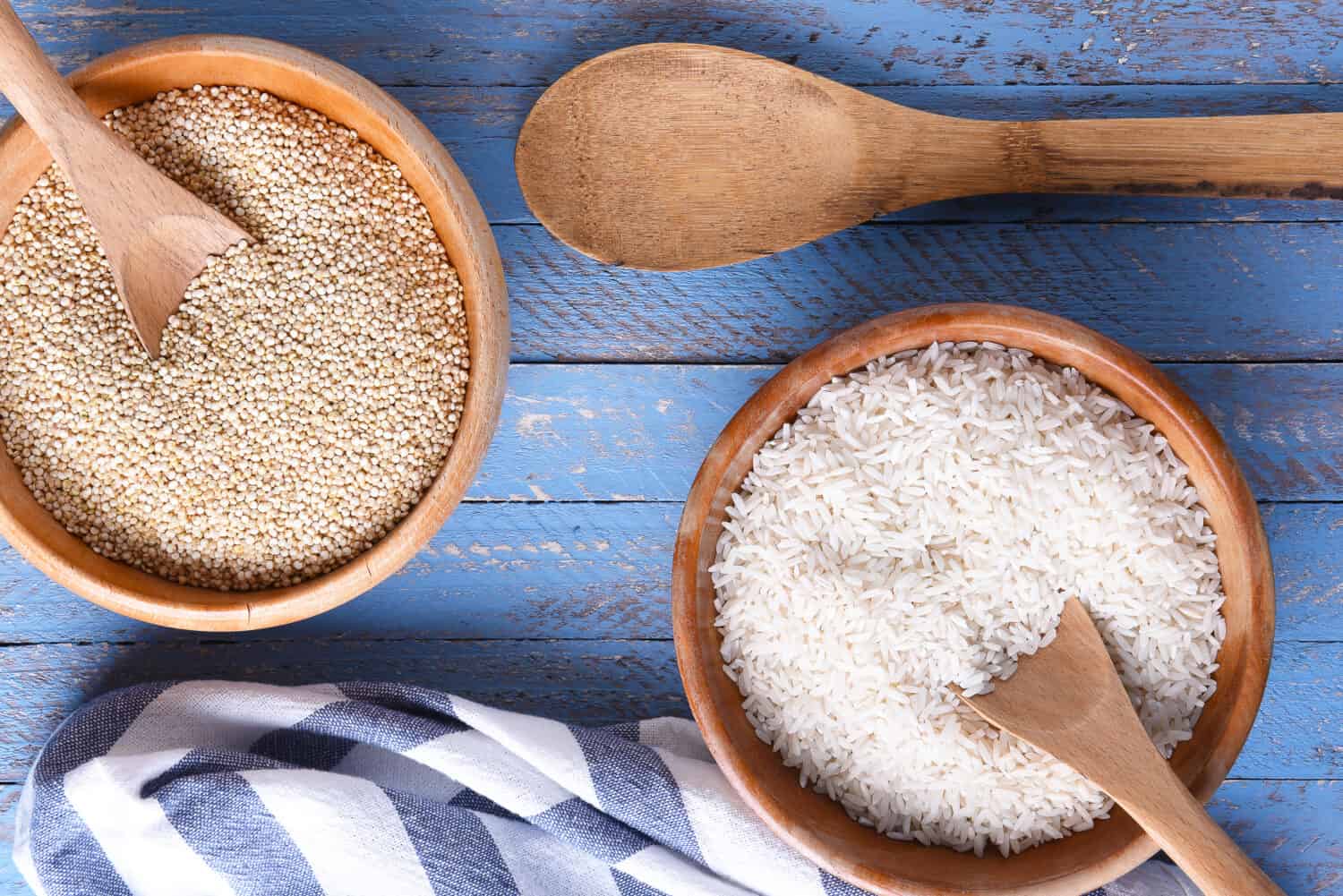While rice has been around for thousands of years, there’s still a lot of debate about whether it's healthy or not. White rice often gets a bad rap and this may have led you to wonder if rice is healthy.
There are many beneficial nutrients in rice but to get the most benefit out of eating rice, it’s important to pay attention to how you serve it and how much you consume. Keep reading to find out more about the benefits and downfalls of rice as well as healthy ways to serve it.

White rice often gets a bad rap, but there are many nutritional benefits to eating rice.
©Amarita/Shutterstock.com
Is Rice Healthy?
It’s not surprising that rice is a staple in Asian cuisine since the domestication of rice can be traced back to 12,000 BC in China. However, in the modern world, rice is an important crop in the United States as well and the U.S. has become the largest rice exporter outside of Asia.
There are close to 40,000 varieties of rice out there, but the two most common types in America are white rice and brown rice. White rice has gotten a bad reputation over the years and some have claimed that eating white rice is like eating empty calories or carbs.
Empty calories or carbs are generally items like sodas or candy that have little nutritional benefit. Comparing white rice to these kinds of junk food really isn’t a fair comparison.
White rice does have nutrients, although this stereotype likely came from the fact that white rice loses nutrients during the milling process. This is why brown rice is often considered a healthier alternative, but white rice is also enriched with nutrients such as B vitamins and iron.
While it’s not accurate to claim that white rice or any type of rice is simply empty carbs or calories, it’s still important to keep in mind how much rice you’re consuming. Carbs are a necessary nutrient and aren’t inherently bad for your health. However, to eat healthy, you need a balance of different nutrients, not just an overload of carbs.
Downfalls of Rice
Rice can be a healthy part of a balanced meal, but what about the potential downfalls of rice? There are several concerns about rice and how healthy it is. Like any food, too much of a good thing is still problematic. Here are some of the major concerns surrounding rice:
- Amount of arsenic
- Loaded with carbs
- Causes weight gain
Let’s take a look at whether these are valid concerns or not.
Amount of Arsenic in Rice
One of the biggest concerns about eating rice is the risk of consuming arsenic. Arsenic is present in soil and water sources, which is how so much of it ends up in rice. Since rice has a porous texture, it absorbs more arsenic than other foods.
Brown rice is also higher in arsenic than white rice because much of the arsenic is present in the bran and germ, which is removed from white rice. This exposure to arsenic is something to consider but there’s still little research on the risks versus the benefits.
Keep in mind that there are different types of arsenic and the level of exposure is what determines how it will impact your health. Eating rice in moderation is considered safe, but alternating it with other grains in your diet will limit your overall exposure.
Loaded with Carbs
Carbs are another one of the most common concerns about consuming rice. While rice certainly isn’t a low-carb food, carbs are a necessary nutrient that our bodies use to make energy. If you’re on a low-carb diet like Keto, rice isn’t the best food for you to consume. If you’re not on a low-carb diet, one cup of rice contains about 45 carbs. For most people, this is only about 20% of your daily carb intake.
Since meat like grilled chicken doesn’t have any carbs, pairing one cup of rice with grilled chicken or something similar will still be a meal of less than 50 carbs. Keep this in mind when you’re planning what you’ll serve alongside your rice.
Causes Weight Gain
Those who are trying to lose weight are generally told to avoid eating rice. But does rice actually cause weight gain? There’s nothing about rice that necessarily leads to weight gain. The connections between refined grain consumption and obesity are minimal.
If you’re eating a lot of refined grains combined with other unhealthy foods and your caloric intake is higher than it should be, this can lead to weight gain. Eating rice as part of a healthy diet is unlikely to cause weight gain.

Brown rice does contain more nutrients than white rice because of the bran and germ.
©Iasmina Calinciuc/Shutterstock.com
What Types of Rice are Healthiest?
There are thousands of varieties of rice but they’re not all created equal. Brown rice is often held up as the healthiest type of rice and there is some truth to that. Compared to white rice, it’s higher in protein and fiber, with a slightly higher fat content as well.
Overall, the main difference between brown and white rice is the nutrients. Brown rice has more nutrients than white rice because it still contains the bran and germ. However, brown rice leads to a greater risk of arsenic exposure than white rice. If you prefer white rice to brown rice, you can still make white rice a healthy part of your regular meal and make up the extra fiber in other ways.
Nutritional Value of Brown Rice vs. White Rice
The nutritional value of rice will depend on what type of rice you choose. While brown rice is one of the healthiest varieties, you’ll find that the amount of calories, carbs, and protein are remarkably similar to that of white rice.
Here’s the nutritional value of the two most popular types of rice:
White Rice
Here’s the nutritional value of 1 cup of white rice:
- 206 calories
- 0.4 grams of fat
- 45 grams of carbs
- 4.3 grams of protein
Brown Rice
Here’s the nutritional value of 1 cup of brown rice:
- 216 calories
- 1.8 grams of fat
- 45 grams of carbs
- 5 grams of protein
Other than the fat content, when comparing white and brown rice varieties, the calories, carbs, and protein are similar. What makes brown rice healthier than white rice isn’t the calorie or carb content, it’s the vitamins and minerals present in the germ and bran.
Healthy Ways to Serve Rice
Despite some of the concerns about eating white rice, you won’t typically be eating rice by itself. When you pair it with a nutritious main dish, white rice can be a healthy part of your lunch or dinner.
For a healthy meal, you can serve rice with:
- Grilled chicken and broccoli
- Grilled vegetables
- Roasted salmon
- Stuffed peppers
- Cream of rice soup
There are numerous ways to enjoy white or brown rice, no matter what your preferences are. When you pair rice with grilled meat, fish, or vegetables, you can enjoy the many benefits of eating a healthy, balanced meal.
Rice Recipes
- 10 Rice Side Dishes for Pork Tenderloin
- Healthy Chicken and Rice
- Rice Cereal Breakfast
- Healthy Fried Rice
- Healthy Sunshine Rice
The image featured at the top of this post is ©Steve Cukrov/Shutterstock.com

